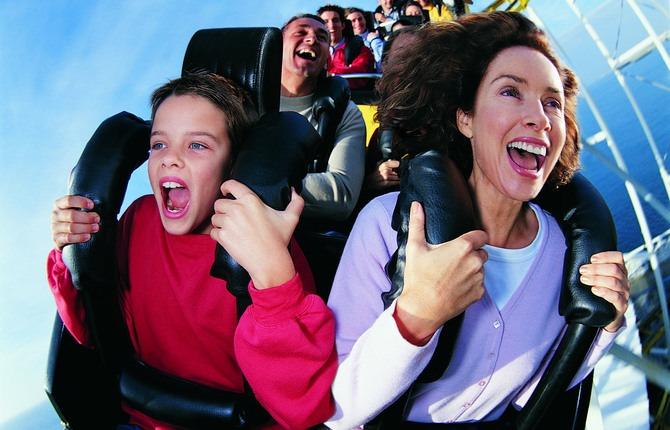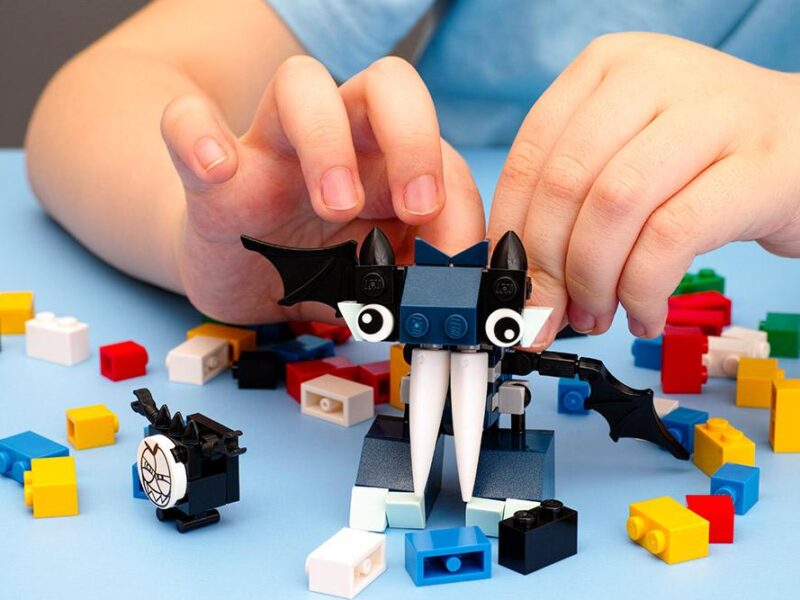
Amusement park safety tips
With summer in full swing, many families may be thinking about heading to an amusement park or summer festival for a fun day riding stomach-dropping roller coasters, Ferris wheels and spinning swings. Rides can be thrilling, and even a little scary, but most of the sensation of danger is a clever illusion, says Kathryn Woodcock, an amusement ride expert at Ryerson University.
Professor Woodcock, director of the Ryerson’s THRILL lab (Tools for Holistic Ride Inspection Learning and Leadership), says before buckling-in parents and their young ones should remember a few things to make their day safe and fun:
Tips for parents:
1. Don’t get a false sense of security from height limits if your child is tall for her age. The height requirement is aimed to filter out children too young for the intensity of the ride or who don’t have the muscle strength for its forces. Try to see the ride through your child’s eyes. To your child, it may seem fast, noisy, and shaky, or full of fascinating distractions and confusing illusions that can cause impulsive behaviour. Make sure the lap bars secure the child if he/she is slender as well as tall for his/her age.
2. When the rules require that your child ride with a supervising companion, make sure that individual is paying attention to the child, not simply enjoying the ride from the next seat. Companions are required when there is some concern that smaller children may react to the ride out of fear or excitement with dangerous actions. The companion is part of the safety restraint system of the ride. If you’re not riding with your child, choose a companion mature enough that you would trust them to babysit your child.
3. Don’t undermine the operator’s responsibility to keep your children safe. If the operator says your child is too small to ride, explain to your child he isn’t ready and he can try again next year. Likewise, don’t give into your child’s demands to go on a ride that you think is too mature for him. He or she may not realize how fast the roller coaster will seem or how high the Ferris wheel goes. Children can panic and attempt to exit the moving ride or suffer through the ride feeling traumatized. This can spoil the day for everyone and may have repercussions on future trips to the fair.
4. If something seems wrong with the ride, such as a lap bar not latching properly or brakes not holding well, inform the operator immediately, and as soon as possible, tell guest relations at the carnival or main park entrance in case the operator did not understand you. If you are still concerned, contact the regulator. In Ontario, fill out the consumer form on www.tssa.org/report.asp or call toll free 1-877-682-8772.
5. Be especially careful of “bouncy castles” and inflatable slides. There have been many sprains and fractures, and even fatal injuries when these devices are not properly installed and secured to the ground or not adequately supervised. Constant supervision by staff and parents is critical to prevent children injuring themselves or other smaller children. Many inflatable rides are rented and can be staffed by event hosts who are not properly qualified or attentive. If you are the event host, make sure the rental company shows you a current registration document for every device you are renting. Check to ensure they secure every tether attachment to the ground and provide training for staff or volunteers who will supervise the children.
Tips for children:
1. Follow the rules, not the other kids. The rules are to help you have fun, not spoil it.
2. Watch out when the rules say things like “hang on to the handles”, “slide only feet first”, “stay seated”, “don’t rock the seat”, “get rid of gum before you ride”, or “no flipping”. When they post those rules, it is because they know those actions can cause kids to get hurt.
3. Choose rides that are fun for you. Don’t go on a boring ride and try to make it exciting by doing it upside down and backwards. Chances are you can be hurt or may even be sent home and not allowed to come back.
4. Watch out for the little kids. If you see a little kid that is doing something dangerous, warn the ride operator or another adult so someone can help. If you see older kids pushing, shoving and spoiling the fun for others on the ride, tell the ride operator. The operator can direct the older kids to a ride that is more suited to their age group.
5. Read the signs and teach your parents some safety rules. Even adults get hurt when they put their hands in the air or don’t ride properly.





